 Photo Essay
Photo Essay
How to Defend a Rainforest
Amazon Frontlines / Truthdig December 1, 2022 This summer, indigenous groups led a national protest movement to protect what remains of the Ecuadorean Amazon. 10 photos English Spanish-
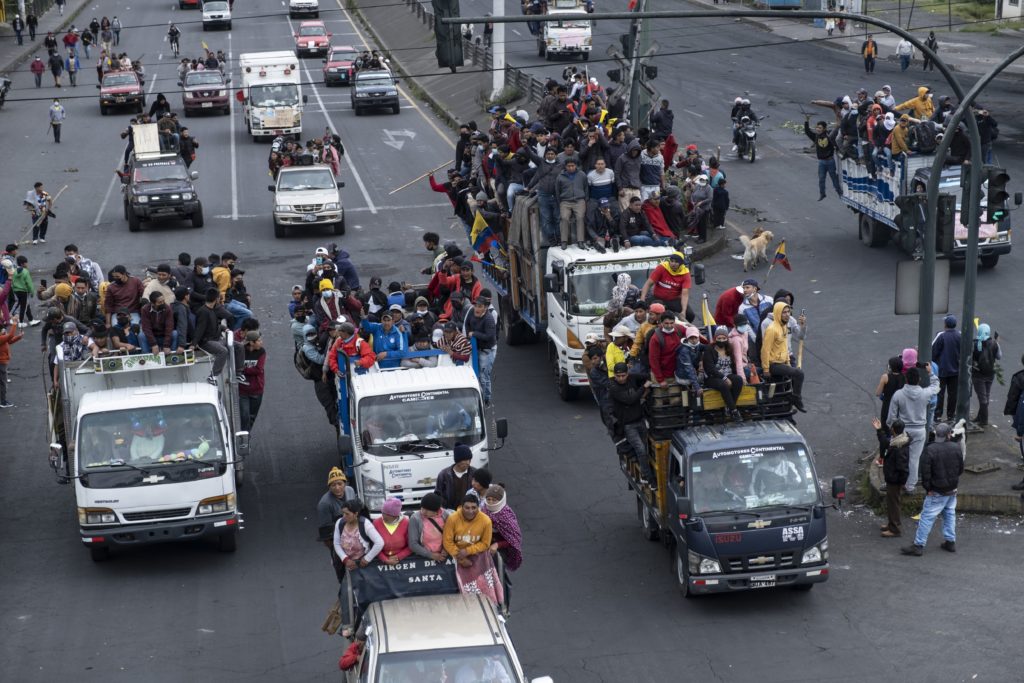
Indigenous Kichwa men and women from communities across the southern highlands of Ecuador arrive in the city of Quito after eight days of direct actions in their territories during the national strike. Photo: Nicolas Kingman/Amazon Frontlines.
-
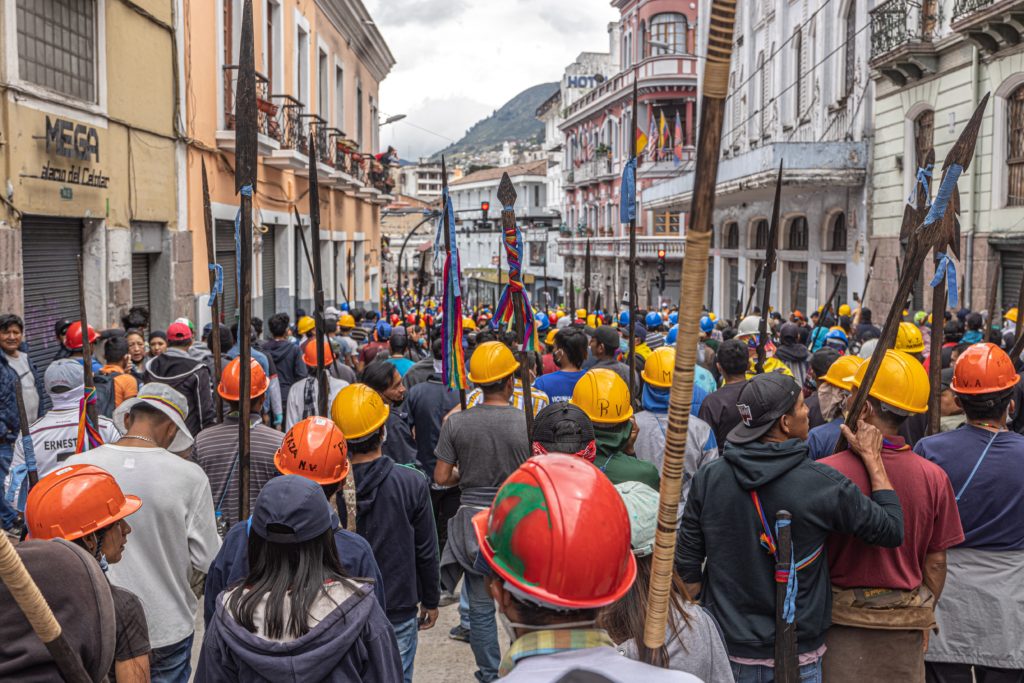
Protesters march peacefully in the center of Quito towards the Government Palace to express their demands. The use of plastic helmets became popular in this demonstration, due to the large number of people suffering from head and eye injuries caused by tear gas bombs. Photo: Nixon Andy Narvaez/Alianza Ceibo
-

Indigenous peoples from diverse nations unite and march in the city of Puyo in the Amazon, before traveling to the capital. June 19th 2022. Photo: Nixon Andy Narvaez/Alianza Ceibo
-
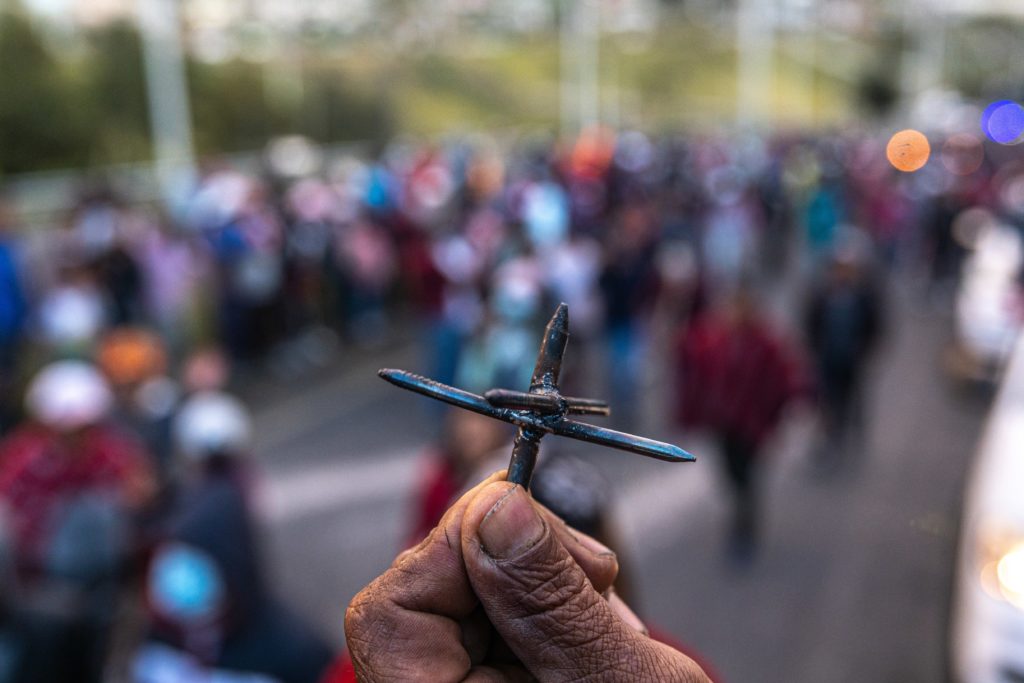
Metal nails were scattered along the route that Amazonian Indigenous caravans traveled to pierce the tires of their vehicles and obstruct their journey towards the capital to join other Indigenous groups. Photo: Nixon Andy Narvaez/Alianza Ceibo. June 20th 2022
-

One of the strategic points where the Indigenous movement began the nationwide strike: “El Boliche” at the entrance to the Cotopaxi National Park in the Andes. The Indigenous and peasant communities of the Cotopaxi Province blocked the road from Quito to the south of Ecuador and vice versa. Photo: Nicolas Kingman/Amazon Frontlines.
-

Thousands of protesters gather before the National Assembly to demand justice, and denounce the lack of support from members of the assembly during the strike. This emblematic place was always strongly protected by the police and the armed forces, who used excessive force against protesters, including rifles and tear gas. Photo: Nixon Andy Narvaez/Alianza Ceibo
-

Strong days of protest in the city of Riobamba, after two Indigenous youth were killed during the strike. Photo: Julian Larrea
-
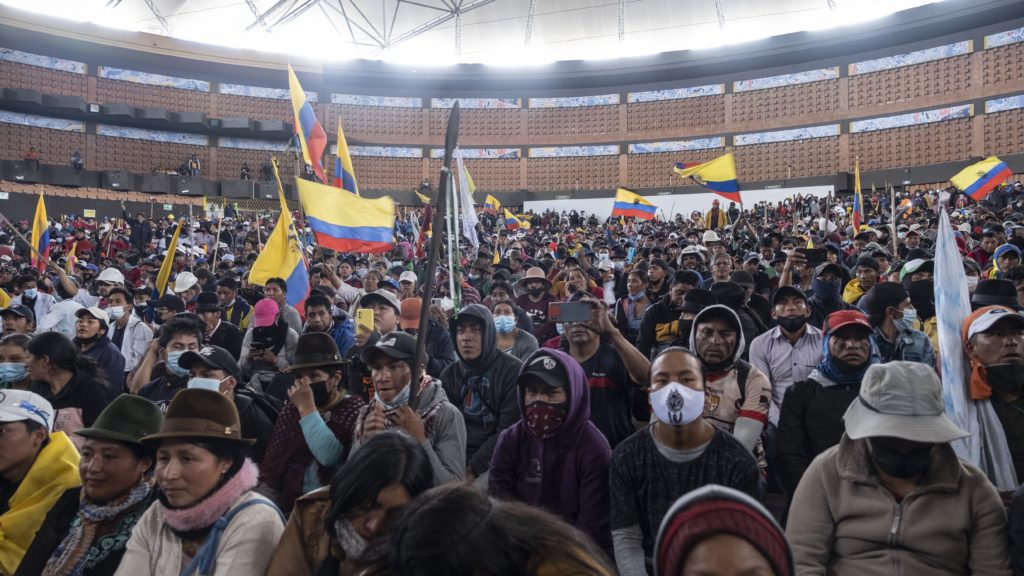
In the House of Ecuadorian Culture, thousands of protesters and sympathizers of the Indigenous movement assemble during the strike to organize and make collective political decisions through an intensive participative process. Photo: Nicolas Kingman/Amazon Frontlines.
-
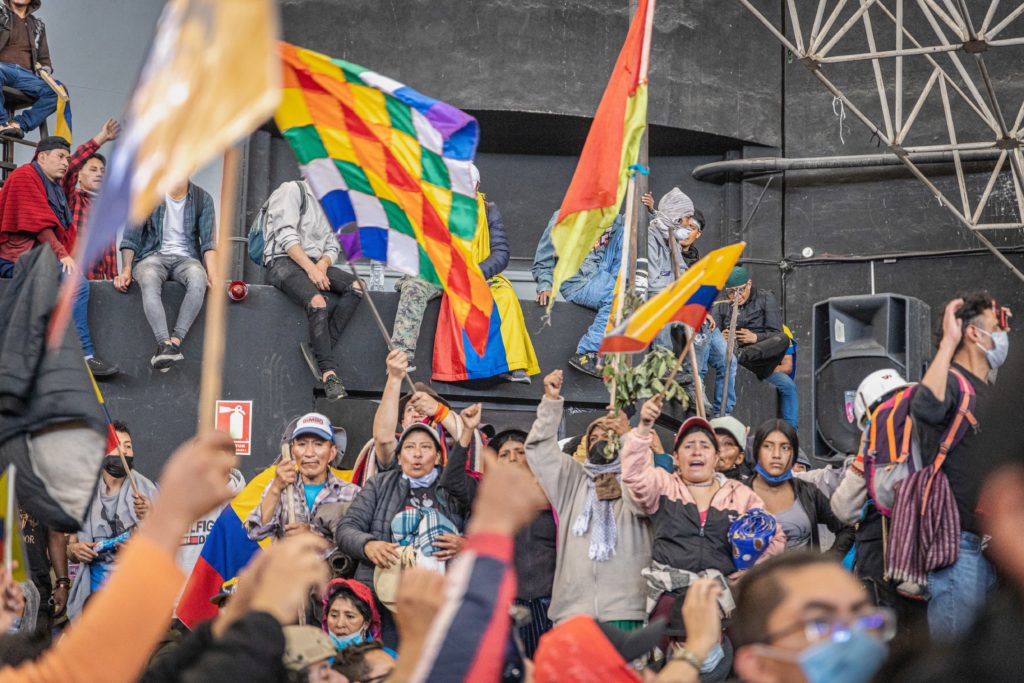
Indigenous protesters celebrate the requisition of the House of Ecuadorian Culture in Quito, after the police barred access to thousands of people from the site for several days. The House of Ecuadorian Culture has been an organizing center and shelter for Indigenous protesters during mobilizations for many years. Photo: Nixon Andy Narvaez/Alianza Ceibo
-

Leonidas Iza Salazar, president of Ecuador’s Indigenous umbrella organization CONAIE, gives a speech in front of 30,000 people prior to the occupation of the House of Ecuadorian Culture. Leonidas was arrested and criminalized by the State during the demonstrations. In late September, an Ecuadorian judge ruled that charges against Iza Salazar were null and void because he had been illegally detained. Photo: Nicolas Kingman/Amazon Frontlines.